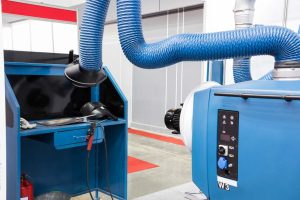8 March 2023 marks International Women’s Day. It’s a day that celebrates ‘the social, economic, cultural and political achievements of women’ whilst also calling for equality – where men and women are treated the same. No one government, country, charity or group is responsible for it.
We hope you found this of interest. Here are some useful links
IWD: About International Women’s Day (internationalwomensday.com)
International Women’s Day 2024: UK Statement to the OSCE – GOV.UK (www.gov.uk)
International Women’s Day | World Vision UK
 The UK has a strong framework and reputation when it comes to health and safety and the approach towards airborne contaminants is no exception. In 2022, there was an estimated 19,000 new cases of breathing or lung problems made worse by work, according to the HSE.
The UK has a strong framework and reputation when it comes to health and safety and the approach towards airborne contaminants is no exception. In 2022, there was an estimated 19,000 new cases of breathing or lung problems made worse by work, according to the HSE.
The primary legislation that addresses harmful airborne contaminants in the workplace is the Control of Substances Hazardous to Health Regulations (COSHH) which outlines that employers have a legal duty to access risks associated with hazardous substances and make decisions on what measures to use to protect the health of their employees. It is important that employers are engaged with airborne hazard safety not only for the health of their employees but to also avoid enforcement action.
As a result, some industries are more susceptible to the presence of harmful substances such as construction, manufacturing, and mining. Manufacturing roles such as brick and tile manufacture, ceramics and stone working and foundry work are particularly prone to harmful effects.
Airborne contaminants can occur from a variety of outputs depending on the occupational setting via substances such as dust, gases, fumes, mists, or vapours present in the air.
Even dusts created by foodstuffs that we consider to be safe can be hazardous, if there is continuous exposure. Output is often invisible to the naked eye, and workers are not aware that they are exposed.
Every year, thousands of workers in the UK experience damaging lung-related effects from airborne contaminants such as lung cancer, asthma or lung scarring because of airborne contaminants they have breathed in at work. The severity of harmful effects will ultimately depend on duration, frequency and degree of exposure to the substances.
As a result of the variety of airborne contaminant transmission and the often-imperceptible output, the HSE has identified a concerning trend: that employers are often unaware that their workers are being exposed to hazardous substances or that their existing controls may be insufficient.
This lack of awareness gives rise to several issues including the sources of exposure being missed, the deterioration of existing controls and incorrect utilisation of the implemented safeguards.
There is a systematic approach to installing LEV in the workplace to make sure that it is fit for purpose and effective. All LEV systems must comply with the Health and Safety at Work Act 1974 (HSWA) and the Control of Substances Hazardous to Health Regulations 2002 (COSHH).
You must manage LEV risk assessment properly; Safety First carries out LEV inspection and testing in the workplace to help companies ensure that they are fully compliant with COSHH regulations. Our qualified occupational hygienists are experts in local exhaust ventilation systems. They will monitor and analyse system performance data, as well as perform qualitative evaluations on the control of potential contaminants. Measurements from the test results are compared with the original LEV specification and performance criteria outlined in HSG258.
Regular inspections of LEV systems should take place to ensure the smooth running of the device.
Safety First’s LEV inspection and testing
Safety First will produce reports and records that will assist your business in improving control measures, plus serve as evidence of your company’s compliance with COSHH regulations.
Contact us should you require further information.
 Making sure your business is a safe place for people to work, shop, or visit is essential. Whether you’re a public-facing high-street retailer, a factory with a growing workforce or your clients are visiting your offices in an industrial estate, there are many hazards you should be looking out for.
Making sure your business is a safe place for people to work, shop, or visit is essential. Whether you’re a public-facing high-street retailer, a factory with a growing workforce or your clients are visiting your offices in an industrial estate, there are many hazards you should be looking out for.
Slip and trip accidents increase during the Autumn and Winter season for a number of reasons: there is less daylight, leaves fall onto paths and become wet and slippery and cold weather spells cause ice and snow to build up on paths. There are effective actions that you can take to reduce the risk of a slip or trip. Regardless of the size of your site, always ensure that regularly used walkways are promptly tackled.
Carry out a risk assessment – Under the Management of Health and Safety at Work Regulations 1999, a risk assessment is a legal requirement that involves identifying sensible measures to control hazards if you’re an employer, your work activity is mentioned in the regulations, or your work poses a risk to others.
Identify hazards outside your business – These are mainly the result of wet and icy weather. Places where hazards could occur include Company car park and its adjoining road, Pavement or pathways etc
Identify hazards inside your business – These can mainly be the result of darker days and colder temperatures. Places where hazards could happen include the entrance areas of your business, dark warehouses, unlit corridors or stairwells for example.
Is there is enough lighting around your workplace for you and your workers to be able to see and avoid hazards that might be on the ground? The easiest way to find out is to ask your employees.
Fallen leaves that become wet or have started to decay can create slip risks in two ways, they hide any hazard that may be on the path or they themselves create a slip risk.
Put in place a procedure for removing leaves at regular intervals; you might even consider removing the offending bushes or trees altogether.
In dealing with rainwater:
The most common method used to de-ice floors is gritting as it is relatively cheap, quick to apply and easy to spread. Rock salt (plain and treated) is the most commonly used ‘grit’. It is the substance used on public roads by the highways authority.
Salt can stop ice forming and cause existing ice or snow to melt. It is most effective when it is ground down, but this will take far longer on pedestrian areas than on roads.
Gritting should be carried out when frost, ice or snow is forecast or when walkways are likely to be damp or wet and the floor temperatures are at, or below freezing. The best times are early in evening before the frost settles and/or early in the morning before employees arrive. Salt doesn’t work instantly; it needs sufficient time to dissolve into the moisture on the floor.
If you grit when it is raining heavily the salt will be washed away, causing a problem if the rain then turns to snow. Compacted snow, which turns to ice, is difficult to treat effectively with grit. Be aware that ‘dawn frost’ can occur on dry surfaces, when early morning dew forms and freezes on impact with the cold surface. It can be difficult to predict when or where this condition will occur.
Contact us if you require further information.
 Working Minds campaign will now target HGV drivers and their bosses to promote good mental health whilst at work. The Road Haulage Association (RHA) on Thursday 10 August joins as a campaign partner.
Working Minds campaign will now target HGV drivers and their bosses to promote good mental health whilst at work. The Road Haulage Association (RHA) on Thursday 10 August joins as a campaign partner.
Health and Safety Executive (HSE) view is that more needs to be done to protect Britain’s truckers from work-related stress.
Long hours away from home, demanding delivery times and limited access to toilets and showers are common causes of stress for drivers.
As part of the campaign, when safe to do so, drivers can text “BeAMate” for free confidential health support 24/7 – a service provided by Working Minds campaign partner, Mates in Mind.
Material and advice from the Working Minds campaign for drivers and employers can be found here.
Mental health charity Mind revealed 30 per cent of work-related illness in the transport and logistics sector is due to stress, depression, and anxiety. One in four HGV drivers will experience mental health issues at some point throughout the year.*
Talking about mental health can be a struggle for many people, especially men, who make up 80 per cent of our industry’s workforce. Due to the stigma surrounding mental health, 95 per cent of workers calling in sick due to stress give a different reason to their manager. Mind also reports that 22 per cent of workers have been diagnosed with a mental health problem, but less than half have told their manager.*
Elizabeth Goodwill, from the HSE’s Stress and Mental Health Policy Team said: “HGV drivers keep the country and our economy moving. It’s therefore vital employers meet their legal duty to ensure risks of stress and mental ill health are factored into risk assessments.
“Initiatives such as ‘BeAMate’ are helpful for people needing individual help, but we would like to see more focus on preventing work-related stress at an organisational level, to stop it developing into poor mental health. We look forward to working with the Road Haulage Association and Mates in Mind to provide employers with the help they need to protect and support drivers.
Michelle Upson, a lorry driver who has been in the industry for more than three decades said: “I’d say there is a mental health problem in the industry. Especially for the guys up the road all week and without their families – it is a lot tougher for them.
“Most of the workforce is men and the age demographic is still high. I think they are less likely to talk about their mental health problems so promoting it is a good thing.”
HSE and the Working Minds campaign warns that the scale of work-related stress across the economy has increased in recent years. Stress, depression or anxiety is now the number one cause of work-related ill-health in Great Britain.
Within the transportation and storage sector as a whole (which includes road haulage), around four in ten cases of work-related ill-health are due to stress, depression or anxiety.
Text “BeAMate”: If you or someone you know needs help or support, you can use our “BeAMate” text support service. To use the service, simply text “BeAMate” to 85258 and trained volunteers can help with issues including anxiety, stress, loneliness or depression and are available 24/7.
Contact us for further advice.